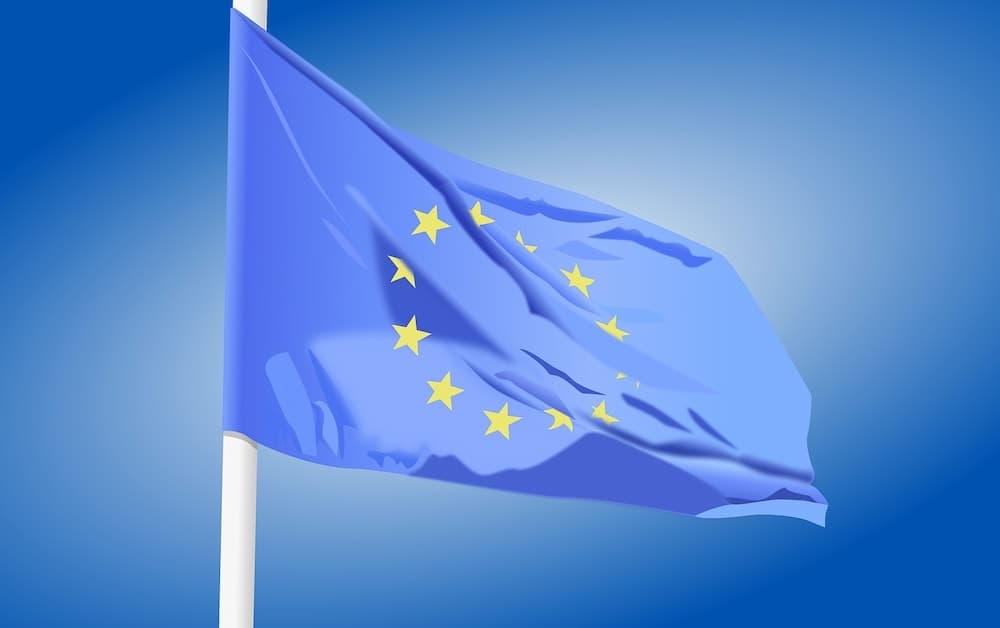Introduction
The General Data Protection Regulation (GDPR) is a landmark European data protection regulation that has been in force since May 25, 2018. It created a unified regulatory regime across the European Union for the processing of personal data of EU residents, thereby giving individuals greater rights over their data and placing significant compliance obligations on all organizations handling such data. From data portability to automated decision‑making, GDPR has become a global benchmark for data protection and data privacy.
While the regulation itself has not been fundamentally rewritten, enforcement has increasingly matured and evolved. In 2025, the focus is less about the early hype of GDPR compliance and more about operationalizing and refining data handling practices, aligning international data transfers, and ensuring that the regulatory regime remains effective in a world of AI systems, connected devices, and cross‑border data flows. GDPR continues to shape the global privacy agenda and influence international data protection standards.
The European Data Protection Board (EDPB) and national data protection authorities (DPAs) remain central to this evolution. The EDPB’s 2024–2027 Strategy reinforces the view that enforcement needs to be consistent, harmonized, and responsive to emerging technologies. For companies operating in the EU, or targeting EU residents, this means proactive data governance and regulatory compliance are no longer optional. You must maintain GDPR compliance, manage data transfers, protect personal data, and ensure data subject rights are respected. At the same time, the European Commission is pushing simplification efforts to reduce administrative burdens for small and medium‑sized enterprises (SMEs), while preserving the core principles of the GDPR. The evolving landscape requires organizations to be agile, informed, and accountable.
Data Subject Rights and Consent
One of the core pillars of GDPR enforcement is ensuring that data subjects, the individuals whose personal data is processed, actually can exercise their rights under the regulation. These include rights of access, erasure, and data portability. In 2025, enforcement trends show that regulators are scrutinizing how companies implement these rights in practice, not just in theory.
For example, the EDPB’s coordinated enforcement action (CEF) for 2024 focused on the right of access under Article 15. Over 1,185 controllers across Europe participated, and the resultant report identified significant challenges, including the lack of internal documented procedures, inconsistent interpretations of exemptions, and barriers to straightforward access requests. Now in 2025, the EDPB has shifted its spotlight to the right of erasure (Article 17) under its CEF 2025 program.
Consent management remains another key area. Valid consent under GDPR must be freely given, specific, informed, and unambiguous. Organizations must ensure that consent is clearly provided, easily withdrawn, and that it is not mixed with other obligations (for example , “consent or pay” models). The EDPB’s increased consistency opinions under Article 64(2) reflect this emphasis. However, consent standards can vary across jurisdictions due to different enforcement approaches and national legal cultures, making it essential for organizations to stay updated on evolving expectations.
In the context of international data transfers and cross‑border data flows, consent becomes even more complex, especially when data flows outside the EU and where different legal bases for processing may apply. Companies must seek professional advice to navigate the interplay between consent, other lawful bases (such as legitimate interests), and the requirements for transfers. In short, data subject rights are increasingly under the enforcement microscope, and organizations must embed robust consent mechanisms as part of broader data protection compliance efforts.

Data Privacy and Protection
At its core, GDPR is about data protection: ensuring organizations behave responsibly when processing personal data, protect it from misuse, and enable individuals to control how their data is processed. In 2025, enforcement is emphasizing operational maturity in data handling practices and proactive governance of personal data.
The EDPB’s 2024 Annual Report highlights that the regulation remains central in a changing digital landscape, with the Board adopting new guidelines and engaging in global forums to maintain the GDPR as a global benchmark. The same report underlines that the EDPB now handles more consistent opinions (Article 64(2)) and is linking its work with broader regulatory developments around artificial intelligence (AI), big data, and cross‑regulatory cooperation.
For organizations, this means that protecting personal data – particularly sensitive data such as biometric data or children’s data – remains a high priority. Data protection authorities (DPAs) are increasingly investigating how controllers implement enhanced safeguards, data minimization, and data mapping. From a practical standpoint, companies must maintain clear records of processing, perform privacy impact assessments (PIAs) where required, and ensure that data protection by design and by default is embedded in services and systems. It is essential to integrate data protection and privacy considerations into every stage of service development, from system design through to implementation. The gap between regulation and technological evolution is narrowing, raising compliance burdens – but also offering opportunities for those who build it into their business model.
Data Minimization and Retention
One of the foundational principles of the GDPR is data minimization: the idea that companies should only collect and process personal data that is necessary for a specific purpose, and retain it no longer than necessary. In 2025, enforcement is increasingly focusing on whether organizations truly respect these principles rather than simply paying lip service to them.
Organizations must implement retention policies that balance business needs with data protection obligations. It is no longer sufficient to keep personal data indefinitely “just in case.” The EDPB’s report on the right of access flagged that many controllers lacked documented internal procedures or retention policies for data subject access requests. In turn, this underscores how retention practices and record‑keeping requirements can create regulatory exposure.
Data mapping plays a key role here: organizations are expected to know which personal data flows they have, where data resides, how data moves (including cross‑border flows), and when it should be archived or erased. Data minimization also ties directly into proactive data governance: by controlling what data is collected and retained, organizations reduce processing risks, the potential for non‑compliance, and the impact of breaches. In short, retention is a strategic business issue, not just compliance overhead.
Cross-Border Data and Transfers
Cross‑border data transfers and international data flows remain one of the most dynamic and challenging aspects of GDPR compliance. When organizations transmit personal data outside the EU (or EEA), additional safeguards apply. In 2025, enforcement in this area is increasingly rigorous, especially where transfers rely on mechanisms such as standard contractual clauses (SCCs) or binding corporate rules (BCRs).
The EDPB has adopted guidance on Article 48 (third country transfers to foreign public authorities) and on transfers of personal data to third country authorities. In its Annual Report, the EDPB emphasizes the importance of global data protection frameworks and cross‑border consistency of enforcement. For organizations, this means that standard contractual clauses (SCCs) cannot be treated as a mere tick‑box. Controllers must evaluate transfer risks, assess the legal landscape in the destination country (including government access), document transfer impact assessments, and implement enhanced safeguards where necessary.
At the same time, the European Commission is pursuing simplification efforts aimed at SMEs engaging in cross‑border data transfers. The objective is to reduce administrative burdens without sacrificing standards of data protection, acknowledging that smaller organizations often face disproportionate compliance burdens. SME compliance is increasingly important as SMEs must adapt to evolving data protection mandates and heightened regulatory scrutiny worldwide. From an operational standpoint, companies must demonstrate not only lawful data transfers but also ongoing monitoring of international processors, data flows, and cross‑border obligations.

Automated Decision Making
As digital technologies evolve, the role of automated decision‑making and AI systems in data processing is growing, and GDPR enforcement is following suit. Under GDPR, automated processing that produces legal effects or similarly significantly affects individuals requires specific safeguards: transparency, the right for data subjects to obtain human intervention, and more. Organizations using such systems should embed data protection by design and by default, document their processing activities, and ensure compliance with the automation angle of GDPR.
In 2025, the nexus between AI regulation and data protection is particularly relevant. The EDPB has already linked its work with the forthcoming AI Act and issued guidelines on the use of personal data to train AI models. For companies, this means that simply implementing an AI system is not enough: you need to understand how personal data, including potentially sensitive data like biometric data, is used in automated decision‑making contexts, and whether valid consent or other lawful basis exists.
From an enforcement angle, DPAs are increasingly looking at whether controllers have documented their automated decision flows, provided meaningful transparency to data subjects, conducted the required risk assessments, and enabled opt‑out or human review where necessary. The interaction between major technology firms, data brokers, connected devices, and automated processing is under heightened scrutiny, as enforcement actions increasingly target these organizations due to the scale and impact of their data processing activities. This means GDPR obligations are not static, and operational maturity is expected.
Compliance Challenges
While the GDPR has matured over the years, compliance challenges remain, especially for small and medium‑sized enterprises (SMEs) and organizations operating across borders, particularly those with limited resources. In 2025, enforcement trends show that regulators are still grappling with uneven enforcement, different national interpretations, and compliance burdens.
For instance, a report by NOYB – European Center for Digital Rights found that only about 1.3 % of cases brought before DPAs result in fines, raising questions about the efficiency and deterrent effect of enforcement. Nevertheless, the potential for significant GDPR fines remains real, with recent years seeing increased penalties and notable cases involving tech giants like TikTok and Amazon. The CMS Data Protection Group’s GDPR Enforcement Tracker Report for 2025 highlights that fines and enforcement are still an operational risk for organizations.
Compliance burdens for SMEs are real: they often lack the internal resources, dedicated data protection officers (DPOs), or robust data governance frameworks that larger technology firms have. The European Commission’s simplification efforts, therefore, attempt to recognize this imbalance, for example, by proposing to extend certain exemptions (e.g., record‑keeping thresholds) to medium‑sized enterprises.
To meet compliance obligations and avoid administrative fines, organizations must adopt proactive data governance: identifying processing activities, mapping data flows, ensuring consent and rights‑handling, assessing cross‑border transfers, and embedding privacy by design. Companies should not treat GDPR compliance as a one‑time project, but as ongoing. Because enforcement is increasingly focused on systemic compliance rather than isolated violations, you must integrate GDPR into your operations and risk‑management agenda.
The complexity of GDPR means organizations must navigate not only regulatory requirements but also complex legal jargon, making clear communication and understanding essential.
Key challenges include:
- Determining whether the regulation applies to your organization (even those outside the EU).
- Navigating multiple DPAs and differing national interpretations while benefiting from the “one‑stop shop” approach.
- Ensuring data minimization, retention policies, and record‑keeping reflect business reality.
- Managing cross‑border data transfers, including documentation, contractual clauses, and risk assessments.
- Embedding data protection by design and default into services, especially where automated decision‑making, connected devices, or new technologies are involved.
- Maintaining valid consent and effectively responding to data subject rights (access, erasure, portability) across jurisdictions.
- Ensuring SMEs, particularly those operating across borders, are not disproportionately burdened by compliance obligations.
Given all this, organizations should seek professional advice, especially given that nothing in this article is intended to constitute legal advice or a substitute for tailored counsel.
Conclusion
In 2025, enforcement of the GDPR is entering a more mature phase. The European Data Protection Board and national data protection authorities are moving from reactive enforcement (responding to breaches and complaints) to proactive and coordinated interventions via the Coordinated Enforcement Framework (CEF). For example, in 2025, the focus is on the right of erasure under Article 17, reflecting the evolving priorities of regulators.
For companies operating in the EU or processing data of EU residents, the message is clear: GDPR compliance is no longer simply about ticking boxes but about embedding data protection into your business model, handling personal data responsibly, preparing for automated decision‑making, managing cross‑border data transfers with rigor, and enabling data subject rights in practice. SMEs and larger firms alike must build robust frameworks. Proactive data governance, strong data minimization and retention policies, careful mapping of data flows, and implementing enhanced safeguards are now best practices, and increasingly, enforcement expectations.
While simplification efforts by the European Commission offer some relief for smaller enterprises, the core obligations remain. Non‑compliance still carries the risk of administrative fines, reputational damage, and disruption. In a world of pervasive data flows, connected devices, AI systems, and global services, GDPR is more relevant than ever. Organizations that treat data protection as a strategic asset rather than a burden will be best placed to navigate the evolving regulatory environment, meet compliance obligations, and build trust with consumers alike.



